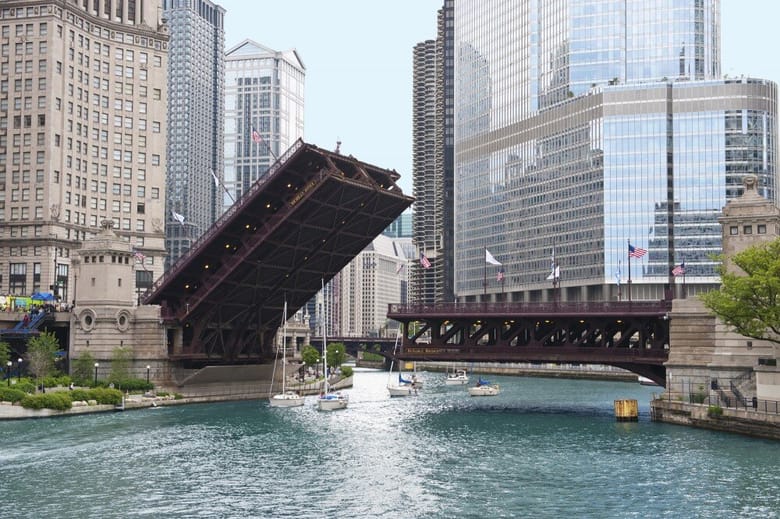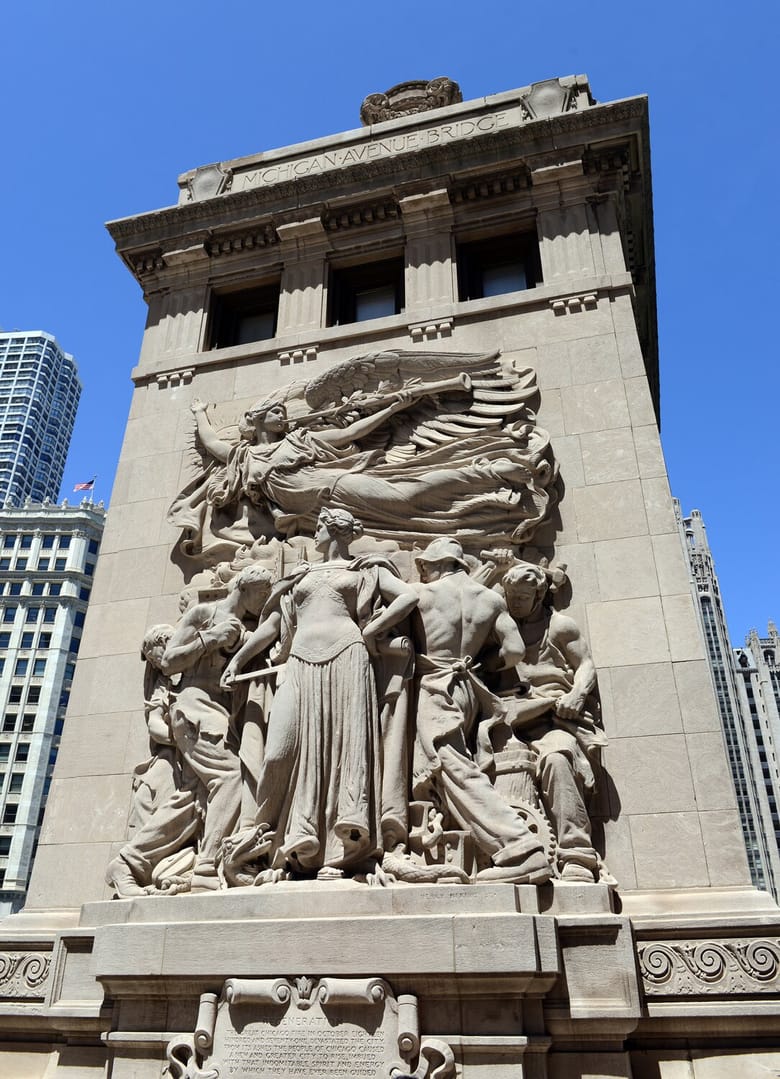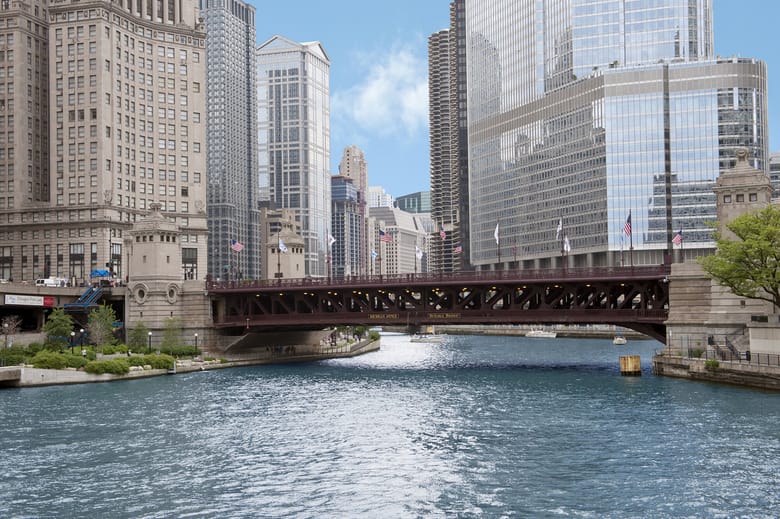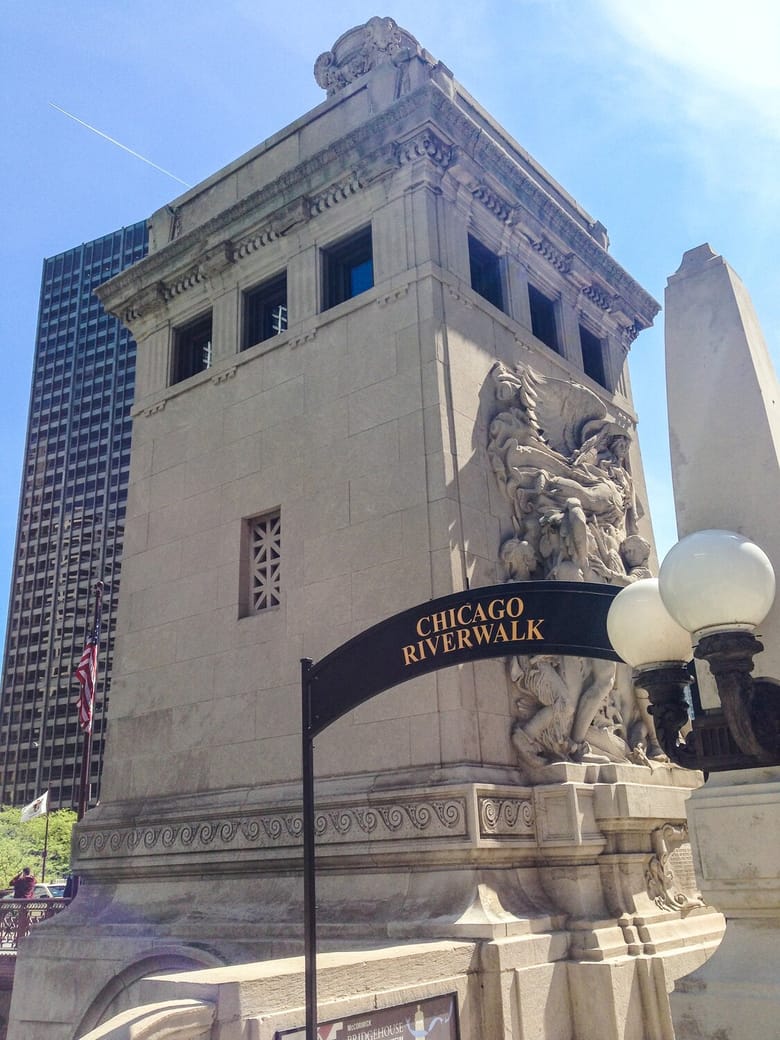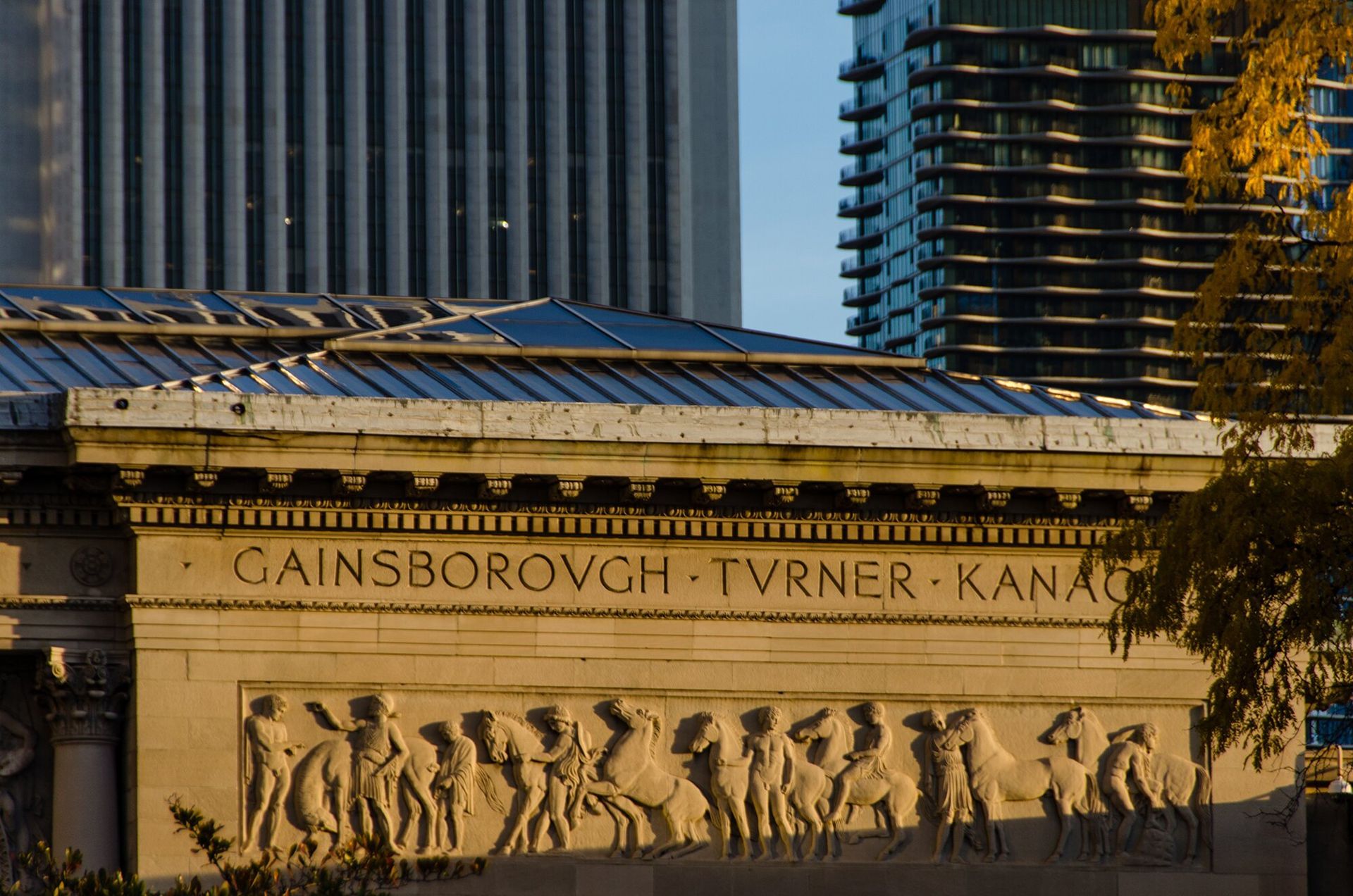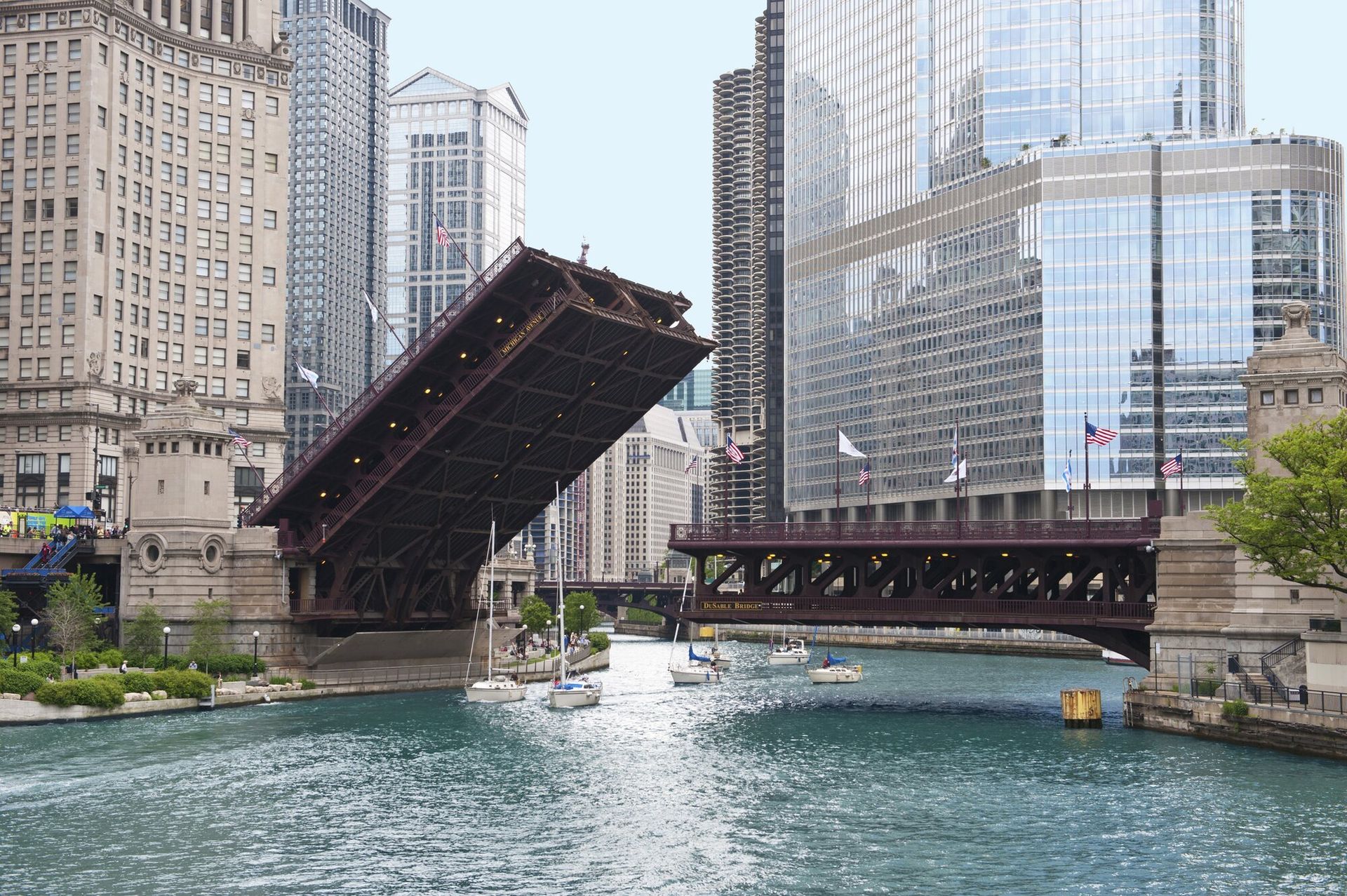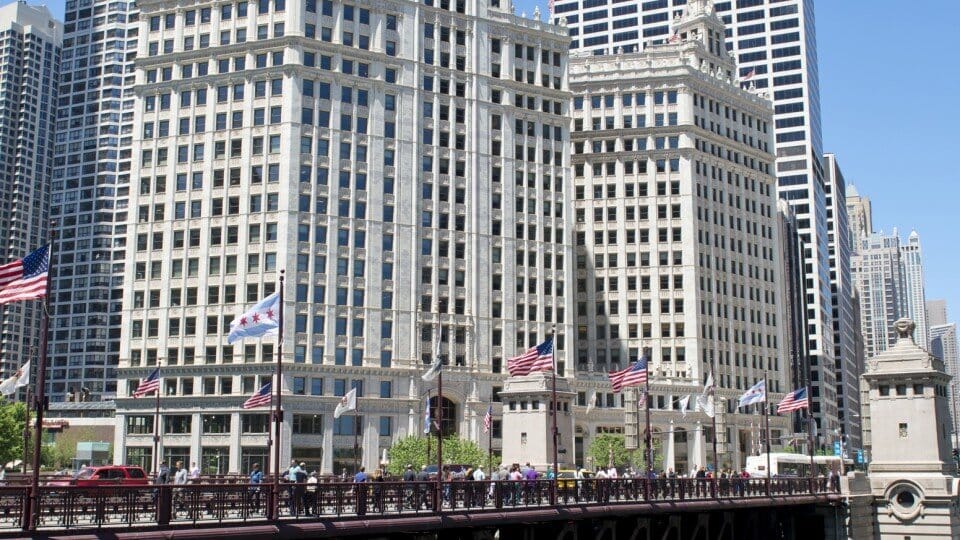Michigan Avenue Bridge (DuSable Bridge)
The place where Michigan Avenue crosses the Chicago River is one of the most iconic urban spaces in the world.
Courtesy Eric Allix Rogers
Official Name | DuSable Bridge (Michigan Avenue Bridge) |
Address | N. Michigan Ave. and E. Wacker Dr. |
Architect | |
Style | |
Neighborhood | Near North Side |
Current Use Type | |
Original Completion Date | 1920 |
Looking up at some of Chicago’s famous buildings, pedestrians and motorists might not notice the bridge they’re crossing—but they should. The DuSable Bridge is all at once a beautiful work of public art and a great feat of civil engineering.
COMPLETING BURNHAM’S PLAN OF CHICAGO
There wasn’t always a bridge here. The 1909 Plan of Chicago recommended that Michigan Avenue be widened and extended north of the river. But this didn’t happen until 1920, making it one of the later bridges built across the main branch of the river. Its completion began a transformation of Michigan Avenue allowing it to become the elegant boulevard we know today.
Like Daniel Burnham and Edward Bennett's 1909 Plan of Chicago itself, the bridge’s design is Beaux Arts. It has a distinctly Parisian flair. Thomas Pihlfeldt, Hugh Young and Edward Bennett designed it to resemble the Alexander III Bridge over the Seine in Paris.
The four bridge houses provide a canvas for bas-relief sculpture depicting pivotal moments in Chicago history:
- The arrival of French explorers James Marquette and Louis Joliet
- The first settlers, Jean Baptiste Point du Sable and John Kinzie
- The Battle of Fort Dearborn
- Rebuilding after the Chicago Fire of 1871
A MONUMENT IN MOTION
Like most bridges over the Chicago River, the DuSable Bridge is movable, which allows boats to pass underneath. Trunnion bascule bridges, like this one, are distinctive features of Chicago's infrastructure. They’re movable bridges with counterweights that lift by rotating around large, fixed axles called trunnions. The enormous underground counterweights balance the bridge’s leaves and allow relatively small motors to open and close the bridge.
DuSable’s two double-deck leaves carry both Michigan Avenue and a lower-level service road over the river, allowing for two levels of vehicular and pedestrian traffic. When the bridge was first constructed, it was said to be the only double-deck bridge built with highways on both levels.
At one time, the bridge opened thousands of times per year. Now, to minimize disruptions to traffic on the Magnificent Mile, it only opens on a limited seasonal schedule.
Did you know?
Each leaf weighs 3,400 tons, but due to the fine balance of the counterweights, two 108-horsepower motors are able to open and close the bridge.
Did you know?
Before the bridge was built, Michigan Avenue north of the river was known as Pine Street.
Did you know?
The McCormick Bridgehouse & Chicago River Museum (the southwest bridge house) is open to the public as a museum where visitors can see the gears that operate the bridge.
Did you know?
In 1922, gangster Vincent “The Schemer” Drucci jumped the opening bridge in his car in an attempt to evade the cops. But pursuing police thwarted the attempt by following behind and jumping an even greater gap.
Did you know?
The bridge was officially named the DuSable Bridge on October 15, 2010.

